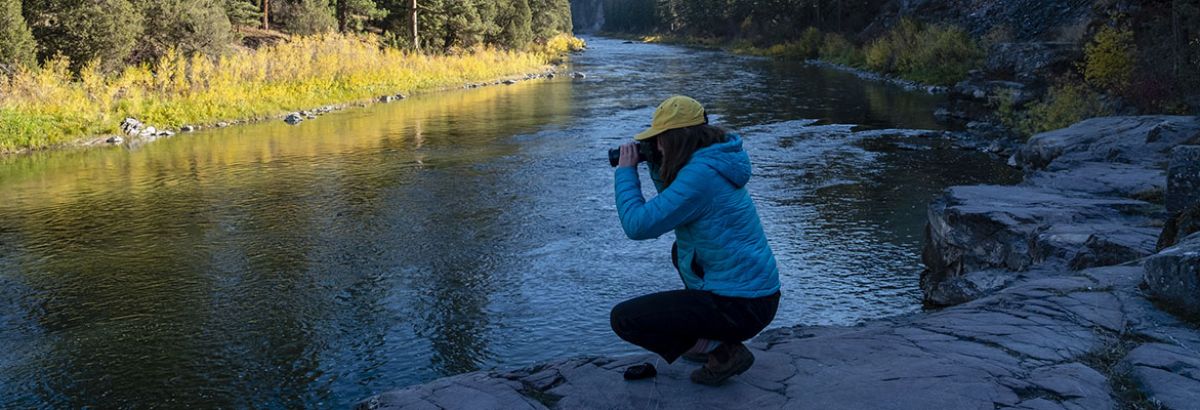Jobs and Career Options
 Whether your goal is to be in front of the camera or behind, the TV and film track at the 猎奇重口 School of Journalism will set you up for a bright career in the industry.
Whether your goal is to be in front of the camera or behind, the TV and film track at the 猎奇重口 School of Journalism will set you up for a bright career in the industry.
And, you'll have plenty of options when you graduate. Jobs in this business abound. The Bureau of Labor Statistics estimates that the job market for producers and directors will grow 8% in the next decade and the market for film editors and camera operators will increase 12%.
Our graduates land jobs as anchors and reporters, producers, directors, editors and web producers. Here are just some of the jobs you'll be prepared for if you choose this track at the UM J-School: Reporter, Host, Producer, Multimedia journalist, Social media editor/producer, Videographer, Video/Film editor, Documentary filmmaker, Web producer, Anchor, Director, Technical Director
The Student Experience
 As a student in the TV and film track, you'll get into the studio and behind the camera at the start. You'll work on daily news and documentaries. You'll report and anchor and run the camera. And, you'll also get to work on what fires you up.
As a student in the TV and film track, you'll get into the studio and behind the camera at the start. You'll work on daily news and documentaries. You'll report and anchor and run the camera. And, you'll also get to work on what fires you up.
Broadcast student Meghan Fatouros says this:
"...that’s what I love about the J-School is there so much creative freedom. It’s not one of these things where: ‘here’s the rubric, here’s the themes I’m looking for.’ It’s like: ‘what are you passionate about? Go out there and do it. Learn by doing.’"
Her advice for prospective students?
"Don’t be afraid to change and [change] is always going to be coming your way. Life is done through such a zigzag pattern. And the journalism school will [support] you. You don’t have to fit this certain mold."
Notable Alumni

Maritsa Georgiou, reporter/anchor, Newsy
Shane Bishop, producer, Dateline
Erik Olson, digital content producer, KTVQ Billings
Meg Oliver (pictured at left), news correspondent, CBS News
Breanna McCabe, TV producer and documentary filmmaker, 猎奇重口 PBS
"The best thing about the UM J-school training was that it was hands on! Everything we did in the classroom we used in the field. When I looked around for Journalism schools UM stood out to me for their hands-on approach and the amazing professors they had on hand."
Meg Oliver
Courses
Students in the TV and film track start with the "core four" journalism classes in their first years, focused on the basics of media history, writing, news judgment and reporting. From there, you'll branch out and start focusing in on the aspects of TV and film that most interest you, getting out there in the real world reporting and editing and producing projects that get aired with our local and statewide partners, like 猎奇重口 PBS and other 猎奇重口 broadcasters. Students are also encouraged to try out some film and cinematography classes in the School of Visual and Media Arts.
|
Course Type |
Course Number |
Course Title |
|---|---|---|
|
Lower-Division Required Coursed in Major |
JRNL 100H |
Media History and Literacy |
|
JRNL 170 |
Writing the News |
|
|
JRNL 257 |
Beginning Visual Journalism |
|
|
JRNL 270 |
Reporting the News |
|
|
Upper-Division Required Courses in the Major |
JRNL 300 |
First Amendment and Journalism Law |
|
JRNL 400 |
Ethics and Trends in News Media |
|
|
JRNL 498 |
Supervised Internship |
|
|
Upper Division Writing Requirement Suggestion |
JRNL 340 |
Intermediate Audio |
|
JRNL 352 |
Intermediate Video Reporting and Producing |
|
|
Five Upper-Division Elective Requirement Suggestions |
JRNL 332 |
Audience and Social Media |
|
JRNL 350 |
Intermediate Video |
|
|
JRNL 351 |
Intermediate Video Directing |
|
|
JRNL 391 |
Documentary Film History |
|
|
JRNL 482 |
Advanced Video Storytelling |
|
|
Capstone Requirement Suggestions |
JRNL 480 |
Reporting Video News |
|
JRNL 481 |
Advanced Video Photo and Directing |
|
|
JRNL 488 |
Student Documentary Unit |
|
|
Courses Outside JRNL Suggested |
MART 345 |
Sound for Film |
|
MART 327 |
Intro to Cinematography |
|
|
MAR 252 |
Screenwriting |
